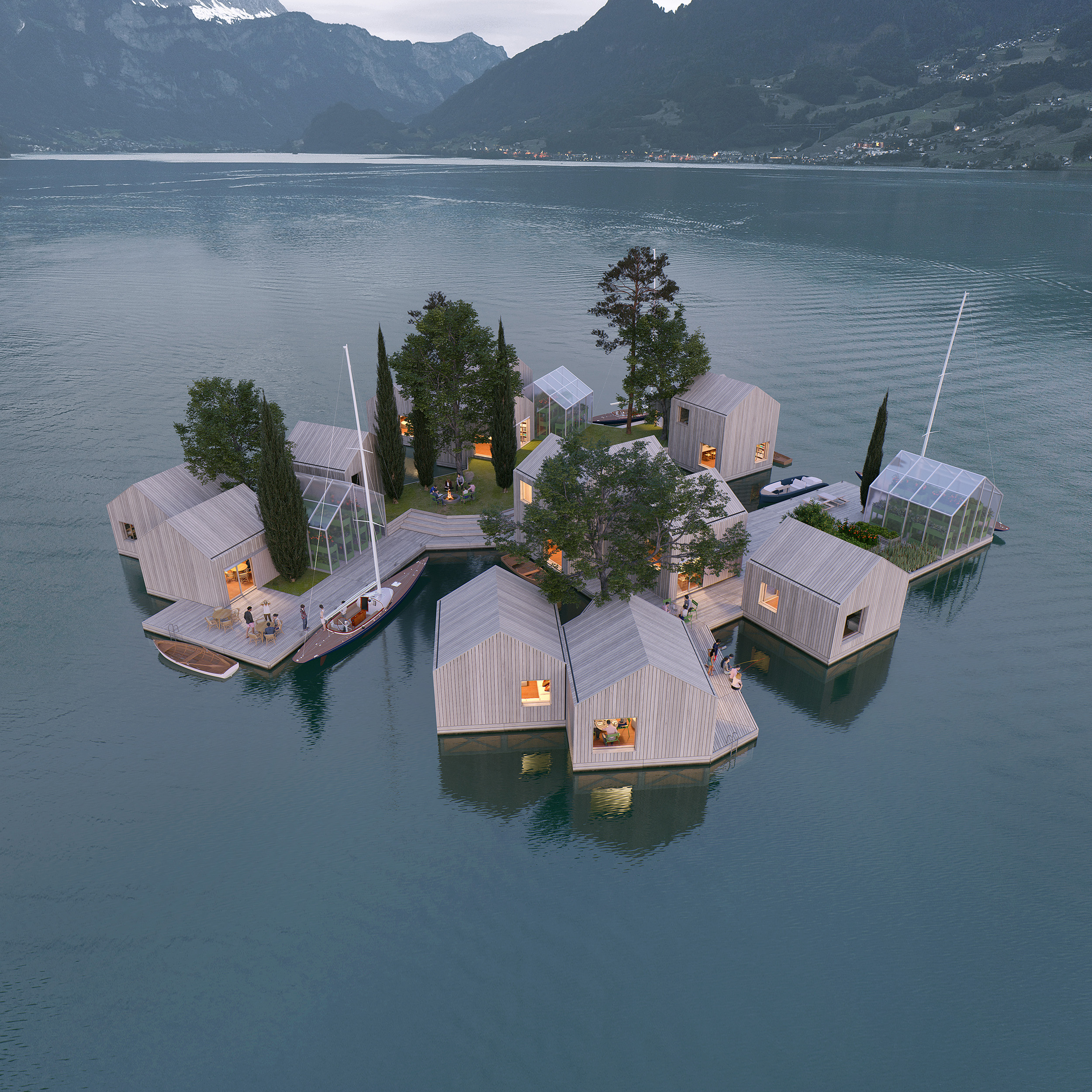
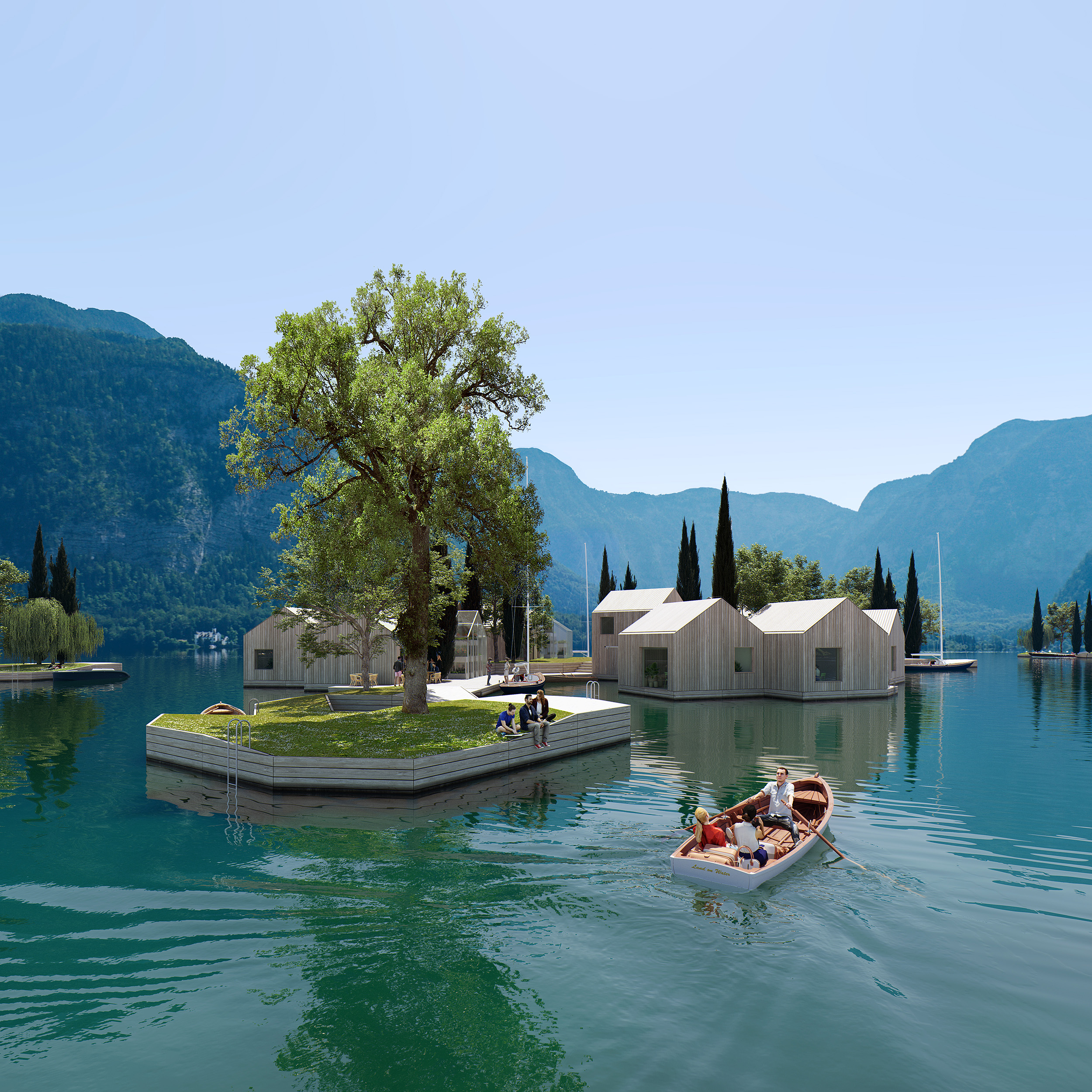
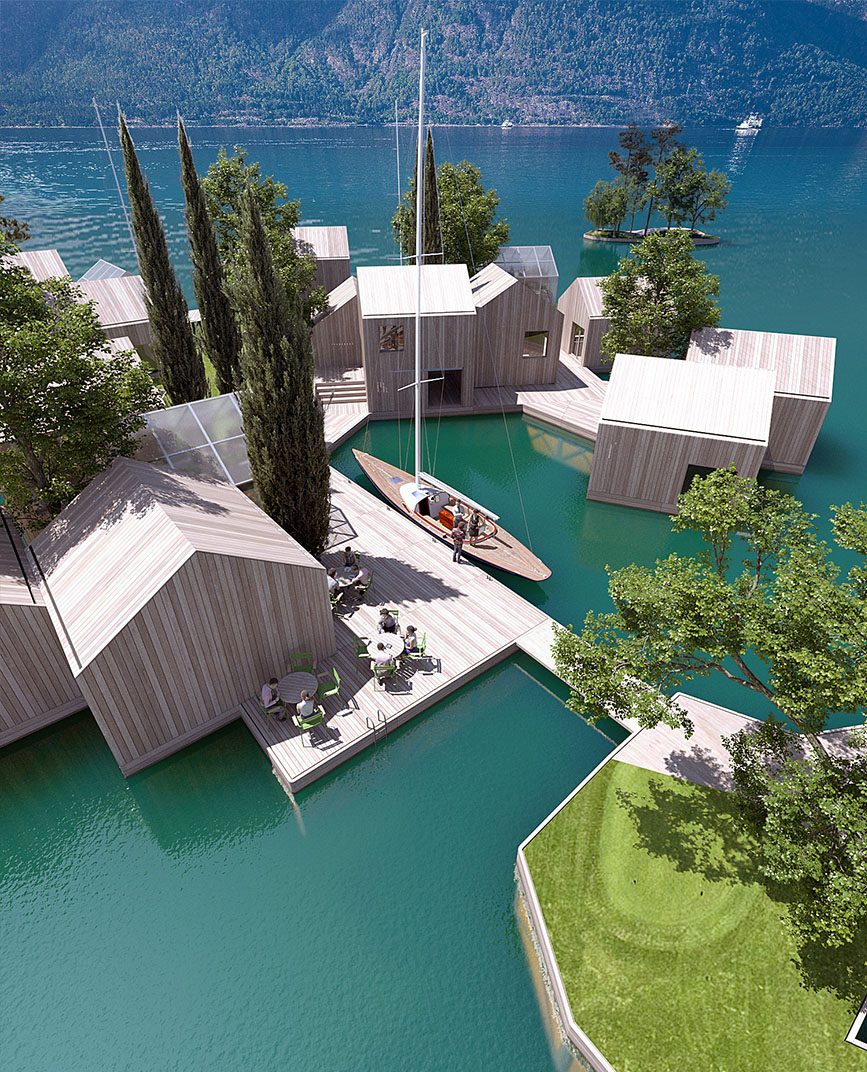
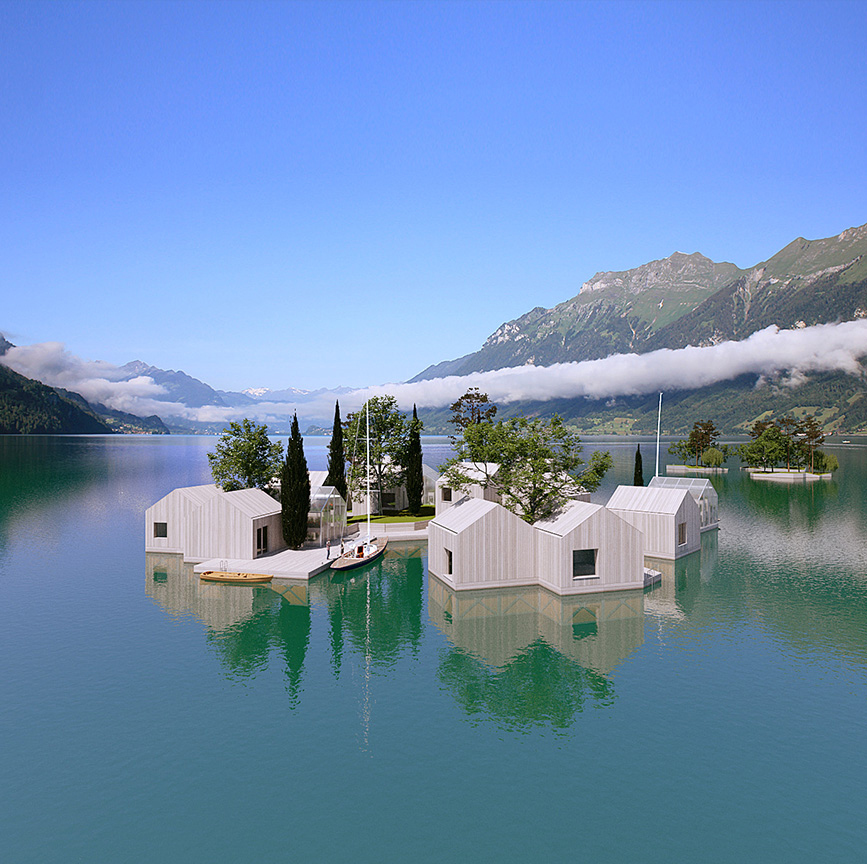
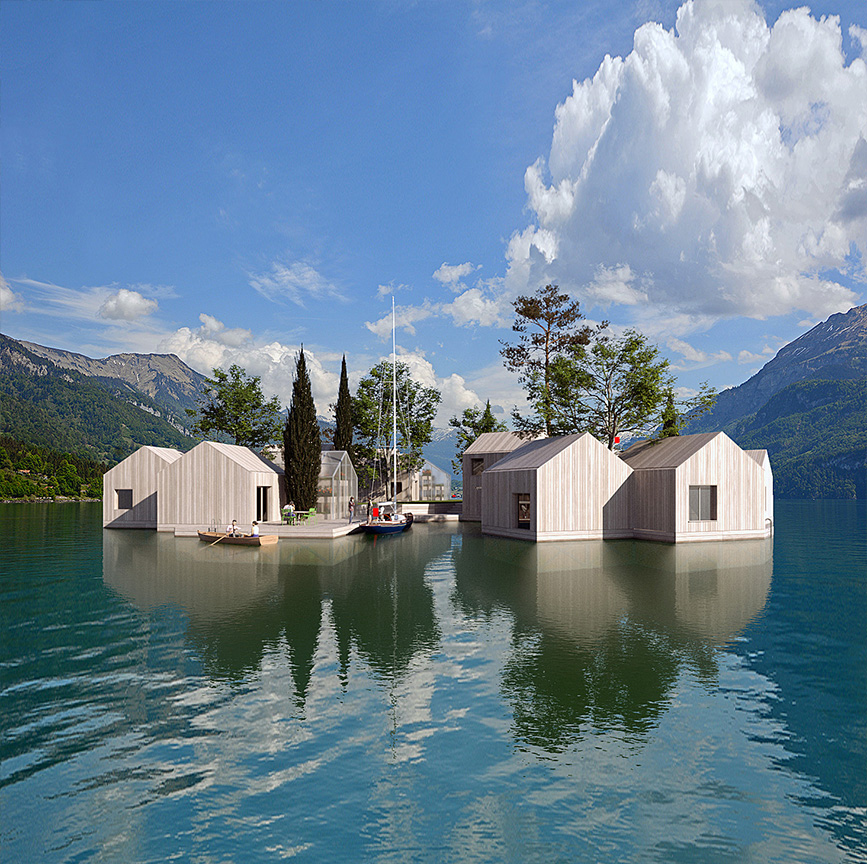
【獎項 Prizes】優選 Distinction
【國家或地區 Country / Region】 丹麥 Denmark
【設計團隊 Group / 設計師 Designer】 MAST - Marshall Blecher、Magnus Maarbjerg
【作品介紹 Description】
水上之地(Land on water)是一個實驗性、自給自足、漂浮的社區空間,可作為任何城市中現有公共空間的補充。建築群會隨著時間進行建造和擴充,使用MAST所設計的創新漂浮地基系統。這些漂浮的地基是用強化過的回收塑膠製成,並結合回收塑膠浮選物質。
這種創新的公共空間將會是自足永續科技的理想測試點。它可以經由新的漂浮架構逐漸擴展。它也會開放給大眾,作為新建築科技和氣候韌性都市主義新方法的展示空間。
Land on Water (LOW)
The LOW system, designed by MAST provides a flexible, adaptable and highly sustainable system for living on water. The deisgn techtonics draw inspiration from traditional gabion cages which are a cost-effective way of anchoring loose materials into a stable construction. LOW inverts the gabion concept, designing a modular system of inverted underwater ‘cages’ which can be filled with locally sourced recycled floatation. The modules can be flat-packed and easily transported, and assembled on-site in countless configurations and use cases. Constructued from fibre reinforced polymer (FRP) made with recycled plastic, the modulas have comparable strength to steel and can last extrmly long in salt water without polluting antifouling paints.
Separating the floatation from the structure and using locally sourced recycled floatation, LOW overcomes many of the inherent problems of today’s floating solutions, such as concrete and polystyrene pontoons, plastic floats and steel hulls; all of which are highly unsustainable and expensive to transport. The inherent flexibility and the economical accessibility of LOW opens up new ways of living where the buildings, as a part of a circular economy, can passed between residents and easily adapted to changing needs and life situations. Thereby it also providing an opportunity to develop organic communities on the water.



